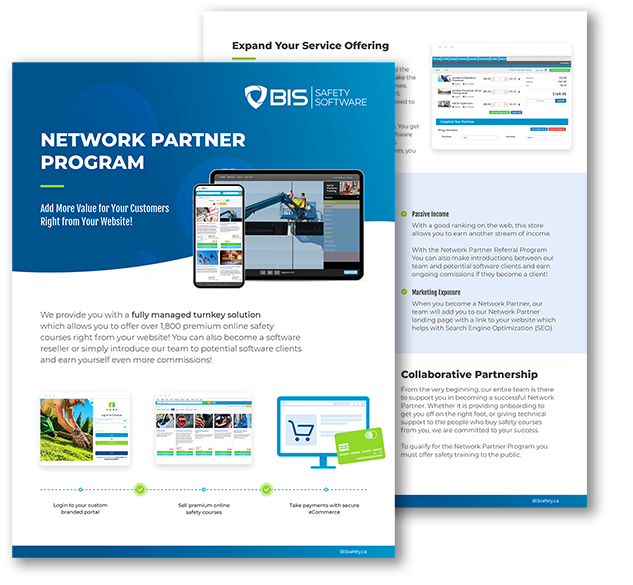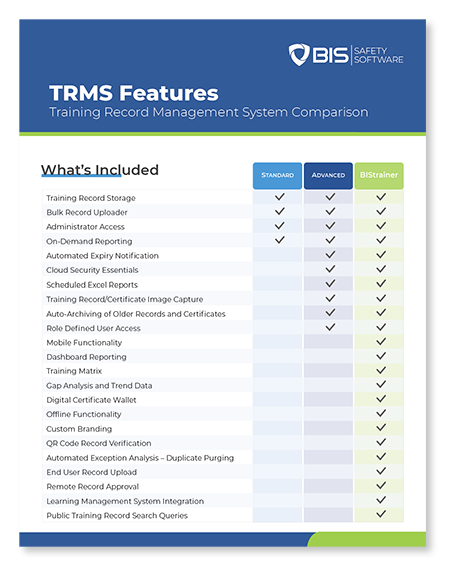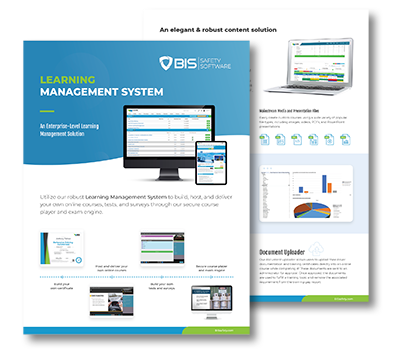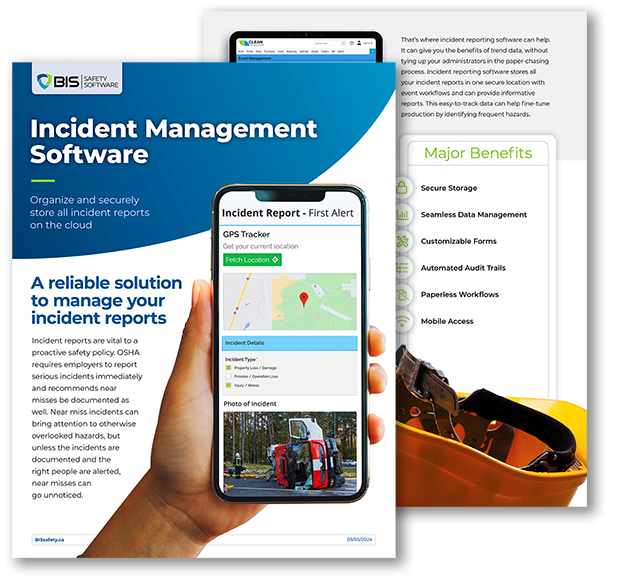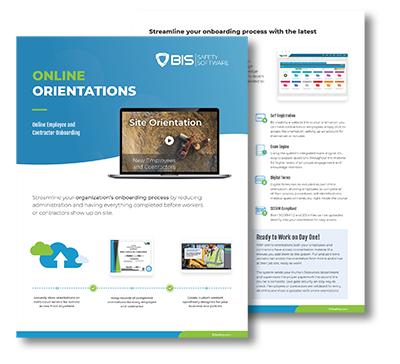A pre-trip inspection is vital for the safety of drivers and all road users, as it checks the truck’s various components to ensure they are operational and defect-free, thus preventing potential accidents. This blog post offers guidance on creating pre-trip inspection forms that adhere to the standards of CCMTA, NSC, and CCOHS.
We will also discuss advanced strategies for simplifying these forms and the potential consequences of neglecting to complete pre-trip inspections in Canada.
Explore this Article:
· What is a Pre-Trip Inspection Form?
· Creating a Pre-Trip Inspection Form That Adheres to CCMTA, NSC, and CCOHS Standards
· Streamline Your Truck Pre-Trip Inspection Form for Ease of Use
· Employ Software to Manage Your Pre-Trip Inspection Forms
· Consequences of Neglecting Pre-Trip Inspections
What is a Pre-Trip Inspection Form?
A pre-trip inspection form is a critical document used by truck drivers to conduct a thorough check of their vehicle before beginning a journey. This form serves as a structured checklist that guides drivers through a detailed inspection of various parts of the truck to ensure everything is in safe working order.
The purpose of the pre-trip inspection form is to identify any mechanical issues, safety concerns, or regulatory compliance violations that could jeopardize the safety of the driver and others on the road. By systematically reviewing each component, drivers can spot potential problems that may require maintenance or repair before the vehicle is operated.
Components Typically Included in a Pre-Trip Inspection Form:
- Engine and Transmission: Checks for leaks, proper fluid levels, and belt integrity.
- Brakes and Air Systems: Ensures brakes are functioning correctly and air pressure is stable.
- Wheels and Tires: Inspects for proper inflation, tread wear, and damage.
- Lights and Electrical Systems: Verifies that headlights, brake lights, turn signals, and other electrical systems are operational.
- Steering and Suspension: Assesses the condition of steering components and suspension stability.
- Cargo and Safety Equipment: Examines cargo securement and the availability of required safety equipment like fire extinguishers and warning triangles.
- Cab and Body: Looks for damage or issues with the cab structure, mirrors, windshield, and wipers.

Creating a Pre-Trip Inspection Form That Adheres to CCMTA, NSC, and CCOHS Standards
To ensure compliance throughout Canada, it’s crucial to incorporate standards from CCMTA, NSC, and CCOHS. Consider the following checks:
- Engine Compartment: Check oil levels, hoses, belts, the air filter, and for any leaks.
- Cab Inspection: Look for damage to the windshield, mirrors, lights, and windshield wipers. Ensure the horn, emergency brakes, and seat belts are functioning properly.
- Front End: Inspect the steering system, brakes, tires, and wheels.
- Trailer Inspection: Verify the condition of the trailer’s brakes, tires, wheels, and lighting.
- Rear End: Check rear lights, brakes, tires, and wheels.
- Specialized Equipment: Include any specialized equipment like liftgates or refrigeration units.
- Documentation: Document any defects found and actions taken during the inspection.
While the specifics may vary by truck type and industry, the above components are commonly included in Canadian truck pre-trip inspection forms.
For detailed guidance, refer to the National Safety Code (NSC) Standard 13 pre-trip inspection form. This form complies with the requirements of the Canadian Council of Motor Transport Administrators (CCMTA) and NSC Standard 13.
The NSC Standard 13 form contains sections for both driver and vehicle inspections:
- Driver Section: Includes items like seat belts, mirrors, and brakes for the driver to inspect.
- Vehicle Section: Features a checklist for the driver to examine the truck’s tires, lights, and engine.
Designed for clarity and ease of use, the NSC Standard 13 form includes straightforward instructions, visual aids for thorough inspections, and spaces for noting any defects or issues found. It also provides guidelines for reporting these issues to fleet managers.
Using a compliant form like the NSC Standard 13 is crucial for maintaining safety standards and ensuring that all trucks are roadworthy before operation.
Streamline Your Truck Pre-Trip Inspection Form for Ease of Use
Pre-trip inspections are critical for driver safety and roadway safety, yet they can be labor-intensive and time-consuming. Here are some strategies to simplify the pre-trip inspection process for truck drivers:
- Provide Clear, Concise Instructions: It’s important that drivers have straightforward and succinct guidelines on how to perform pre-trip inspections. These instructions should be easy to follow, outlining each step clearly and indicating how to record any discovered issues.
- Offer Training and Support: For drivers who are new to the process or unfamiliar with their truck’s specific components, providing training and support is crucial. This ensures that drivers are well-informed and comfortable with the inspection procedures, which can help decrease mistakes and enhance the accuracy of inspections.
- Enhance Visibility of the Inspection Checklist: Ensuring that the inspection checklist is easily accessible and visible within the truck’s cab is essential. This visibility helps remind drivers of the necessary checks and guarantees that no critical steps are overlooked.
- Foster Open Communication: It’s vital for drivers to feel at ease when reporting any problems they encounter during inspections. Fleet managers should promote open communication and facilitate easy reporting of any concerns or issues. This approach aids in quick resolution of potential problems and helps prevent minor issues from escalating.
- Implement Digital Forms: Adopting digital forms for pre-trip inspections can significantly streamline the process. These electronic forms can be customized to match the specific needs of your fleet and automatically guide drivers through each inspection point. Digital forms can also automatically update based on changes in compliance requirements, ensure that no items are overlooked by using mandatory fields, and simplify the documentation process by allowing drivers to enter information directly on a tablet or smartphone. This not only speeds up the inspection process but also improves data accuracy and makes it easier to track and analyze inspection data over time.

Employ Software to Manage Your Pre-Trip Inspection Forms
Utilizing digital tools is a highly effective method for streamlining pre-trip inspection forms. These digital solutions facilitate easier use, data collection, and analysis. The data gathered through digital forms can be stored and examined to spot trends and potential issues, which can lead to enhancements in both the inspection process and overall fleet safety.
Digital forms also provide real-time feedback to drivers, enabling them to address problems immediately, thereby preventing minor issues from escalating into major concerns. This real-time interaction ensures that drivers can document any issues detected during their inspections, and fleet managers are promptly notified, allowing for swift corrective measures. This responsiveness significantly reduces accident risks and heightens fleet safety.
Moreover, digital solutions help minimize paperwork and administrative burdens. Unlike traditional paper forms, which require considerable effort to manage, digital forms can be quickly created and processed. This automation saves valuable time and resources, freeing up fleet managers to concentrate on other important aspects of fleet operation.
Customization is another significant benefit of using software for pre-trip inspections. Fleet managers can tailor the inspection forms to include specific items relevant to their fleet, such as specialized equipment or unique safety features. This adaptability ensures a thorough inspection, covering all critical truck components before each journey.
Consequences of Neglecting Pre-Trip Inspections
In Canada, penalties for skipping pre-trip inspections can vary by province and territory, typically ranging from $250 to $1,000 for a first violation, with potential increases for repeated offenses.
For instance, in Ontario, under the Highway Traffic Act, a commercial vehicle operator might face a $250 fine for neglecting to perform a pre-trip inspection or not conducting a mandated safety check. This fine escalates to $500 for a second violation within a year and $1,000 for any further offenses during the same period.
It’s crucial to remember that pre-trip inspections are not just a legal requirement but are also essential for the safety of the driver, the vehicle, and other road users. Regular and thorough inspections are imperative to avoid fines and ensure safety on the roads.





